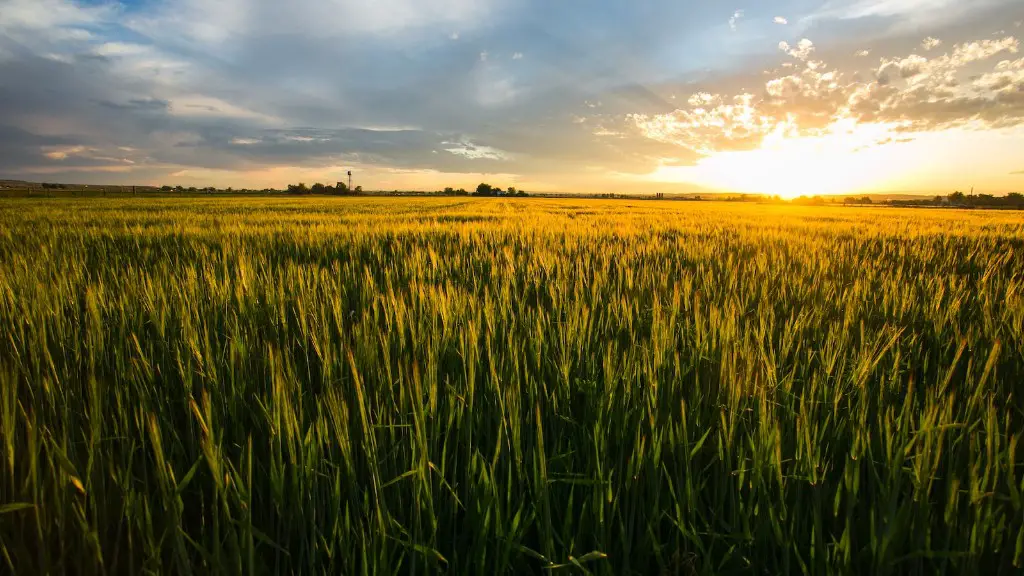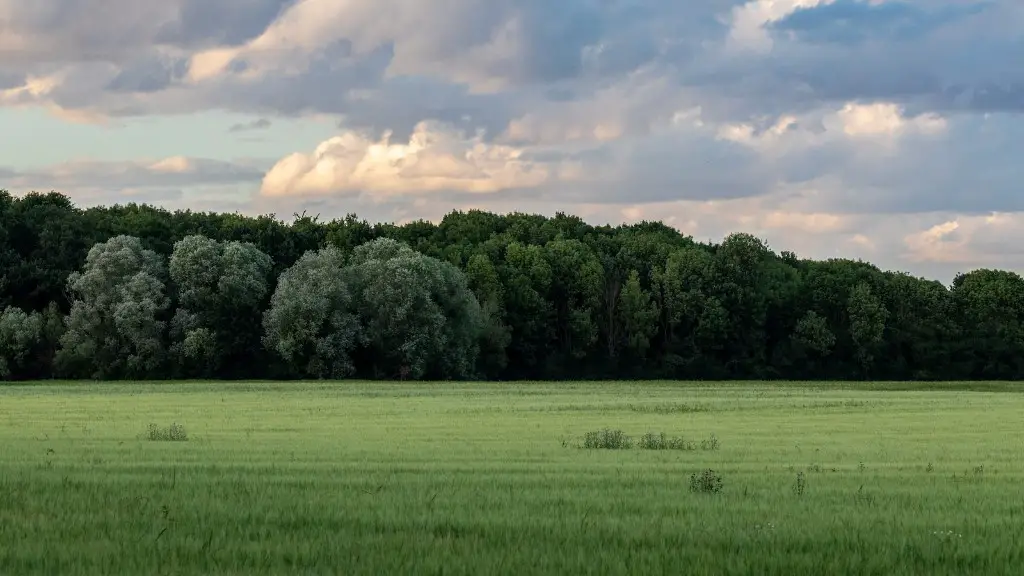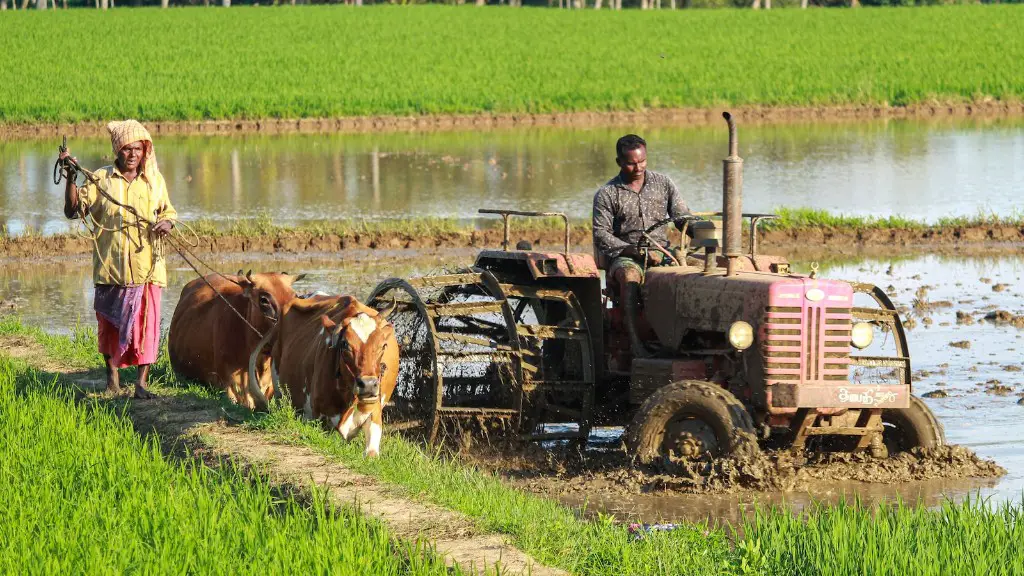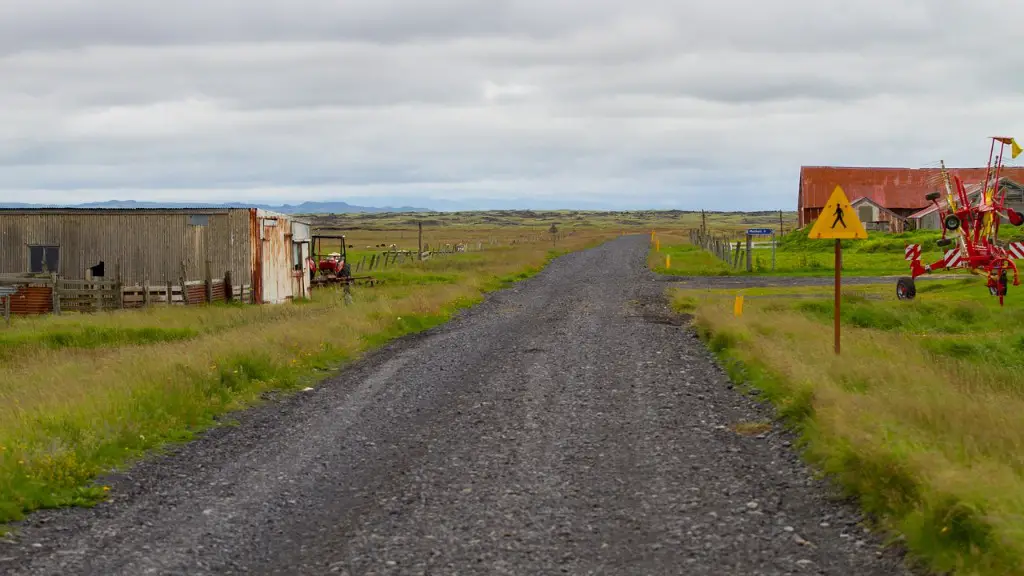Agriculture is an essential component of any eco-system and its success directly correlates with the economic development and growth of nations. As such, it is essential that all agricultural problems are addressed so the industry can remain a healthy and productive industry for years to come. At present, the biggest challenge facing agriculture is climate change. Global temperatures have risen at an alarming rate, leading to fluctuations in temperature and precipitation, as well as an increased intensity of extreme weather events. As a result, vital agricultural output such as water, soil fertility and crop yields have become compromised and uncertain.
In addition to climate change, dwindling resources is another major challenge facing agricultural systems. Agricultural land has been lost to development and much of the agrarian soil is being over-farmed and no longer contains essential nutrients and minerals, making cropping very difficult or impossible. In addition, competition over water and arable land is becoming fiercer between agriculture, energy production and urbanization, making it even harder to produce the necessary resources to drive agricultural production.
The lack of adequate agricultural research and technology is yet another problem facing the agricultural sector. In recent years, the funding of agricultural research and development activities has declined, resulting in fewer new ideas and projects, as well as less efficient use of existing technologies. Furthermore, communication among agricultural stakeholders is not available in all areas, leading to a lack of understanding of the needs, constraints, and availability of resources from the different actors involved in agriculture.
Finally, there is a pressing need for improved agricultural infrastructure. This includes roads, irrigation systems, grain-handling equipment, storage facilities, mechanization, and transport options. Such an infrastructure allows farmers to have access to the resources they need to be more productive and efficient in their farming activities. Unfortunately, many countries have been unable to provide the necessary resources and funding for these infrastructure projects, leaving farmers out in the cold and unable to reap the benefits of improved agricultural infrastructure.
Investing in Agricultural Technology
In order to address the various problems facing agriculture today, investment in agricultural technology is needed. Such investments can allow the industry to transition to new and improved methods of production, creating a more secure and sustainable food supply system. Investments should be focused on the development of precision agriculture, including the use of satellite imagery, automated machinery, and remote monitoring systems to increase the efficiency of farm production.
Improved crop breeding also has an important role to play in helping address the challenges facing agriculture. Research and development of crop varieties that are adapted to more extreme climatic conditions and which offer enhanced productivity potential could go a long way towards making farming more profitable and minimizing losses from crop failure due to climate change. Additionally, scientists need to continue to explore the potential for agroforestry, which combines the raising of trees and crops together, to reduce the impacts of climate change on agricultural production.
Investment in extension services, aimed at bringing the latest advances in agricultural technology and research to farmers, is also critical. Extension services can help bridge the gap between technical experts and local communities, ensuring that farmers and other stakeholders have access to the advice they need to make well-informed decisions. This could include improving access to markets and providing training on the use of new technologies.
Finally, investment in agroecological systems is key to creating a more resilient and sustainable agricultural sector. This can help farmers use local resources more effectively to achieve their goals, and increase the resilience of their farming systems. Agroecological systems can also help to enhance soil fertility, ensure pest control is carried out in an environmentally-friendly way, and improve water retention.
Supporting Small-Scale Farmers
Support for small-scale farmers is also an essential part of addressing the challenges facing agriculture today. Small-scale farmers play a crucial role in providing food security for many countries and are responsible for more than half of the world’s food production. However, they often lack the resources and access to technology that larger-scale farmers have, leaving them at a disadvantage. Supporting small-scale farmers can help to level the playing field and ensure they are able to take full advantage of the opportunities available to them.
One way to support small-scale farmers is to provide access to financial services such as savings and lending, allowing them to make investments in equipment or inputs which can, in turn, help to increase productivity or incomes. In addition, providing training and education in agricultural techniques, access to the latest advances in agricultural research and technology, and efficient and affordable access to markets can all help to support small-scale farmers. Furthermore, providing small-scale farmers with secure access to land can help to ensure their investments are worthwhile and their livelihoods more secure.
Finally, there needs to be a shift towards a more sustainable approach to farming, including transitioning to agroecological systems. Agroecology offers small-scale farmers an opportunity to increase their productivity, as well as their ability to manage pests and disease, all while using fewer resources and minimizing the impacts of climate change. This could not only help to improve the livelihoods of small-scale farmers, but also help to ensure that the benefits of agriculture are felt more widely.
Investing in R&D
In order to continue to innovate and progress in the face of the challenges facing agriculture today, access to research and development (R&D) activities must be improved. Agricultural R&D is often costly, and therefore most farmers lack the resources needed for this activity. Governments, however, can play an important role in enabling the necessary investment in R&D activities, as it is proven that increases in R&D spending can lead to increases in agricultural output. By investing more in R&D activities and creating more accessible, affordable research opportunities, the agricultural industry can continue to innovate and progress in the long-term.
Additional investment in education and training in the agricultural sector is also needed in order to ensure farmers and other stakeholders are able to keep up with the latest developments. Through educational institutions, farmers can be offered online and classroom-based courses to help them better understand the challenges they face. This not only increases the level of knowledge and skills within the agricultural sector, but it also helps to improve the decision-making processes of stakeholders, thereby increasing the efficiency and productivity of the sector.
In addition, providing small-scale farmers with greater access to new technologies and reduced costs for existing technologies can help them to become more competitive and efficient in the face of growing competition from larger-scale producers. This could include introducing the use of digital technologies, such as remote monitoring systems, into small-scale agricultural production, which would help farmers to better manage and monitor their crops, as well as reduce their costs.
Finally, policies should be implemented to support innovation in the agricultural sector. This could include providing tax incentives for agritech start-ups and incentives for companies to research and develop new technologies. By ensuring that policies support innovation in the agricultural sector, farmers will be able to adapt their farming practices so they can remain competitive in the long-term.
Addressing the Challenges of Climate Change
As climate change poses a particularly large challenge to agriculture, it is essential that governments create policies to help farmers to mitigate its effects. These policies should include support for adaptation measures such as drought-tolerant crops and agroforestry systems, as well as help to protect farmers from losses resulting from extreme weather events. In addition, policies to help farmers transition to greener practices, including the use of renewable energy sources and reduced reliance on chemical inputs, should be encouraged in order to help farmers reduce the environmental footprint of their farming practices.
Support for research and investment in the development of climate-smart agricultural techniques, such as conservation agriculture and precision farming, is also needed. This includes ensuring that farmers have access to the latest technological innovations and research findings, as well as increasing the affordability of existing agricultural technologies. In order for farmers to benefit from the technology shift, it is essential that training and extension services be made available to ensure that farmers are able to take full potential advantage of these new technologies.
Finally, developing new partnerships between the public and private sectors is essential to create long-term solutions to the challenges of climate change. Governments, private companies, and civil society organizations should work together to create policies, implement efficient technologies, and design effective programs, all of which are needed if farmers are to remain competitive and continue to produce the food we need.
Ensuring Food Security
The concerns facing agriculture today mean that there is an urgent need to ensure food security. This can only be done by improving access to markets and technology for small-scale farmers, as well as investing in infrastructure to reduce the time, cost and risk of transporting food from farm to fork. Policies should be implemented to ensure small-scale farmers have access to the same level of resources and technology as their large-scale counterparts, as well as reducing barriers to entry so that small-scale farmers can benefit from access to markets.
In order to ensure access to markets and reduce the risk of food insecurity, governments must ensure that farmers have access to reliable grocery stores, as well as efficient and diverse distribution systems. In addition, food safety regulations should be implemented to help ensure the quality and safety of food, as well as preventing food waste. Finally, governments should invest in public-private cooperatives in order to improve access to markets and reduce the cost of transportation, storage and distribution of food, making food more affordable and accessible for all.
Conclusion
Agriculture is facing a multitude of challenges today, from climate change and dwindling resources, to a lack of adequate research and technology and inadequate agricultural infrastructure. To address these challenges, investment in agricultural technology, support for small-scale farmers, and R&D activities should all be increased, as well as policies being implemented to help farmers mitigate the impacts of climate change. Finally, governments should invest in infrastructure and public-private partnerships in order to ensure food security and make food more accessible and affordable.





